Table of Contents
Language educators have long emphasized the mastery of four fundamental language skills, namely listening, speaking, reading, and writing. These essential pillars form the cornerstone of effective communication and linguistic comprehension. Proficiency in each of these areas enables individuals to navigate and engage with the diverse tapestry of languages and cultures that enrich our global society.
Whether learning a new language or honing one’s native tongue, the development of these language skills is paramount, empowering individuals to express themselves articulately, comprehend complex ideas, and forge meaningful connections with others on a profound level. Through dedicated instruction and practice in these four language skills, individuals can unlock a world of opportunities for personal growth, academic success, and cross-cultural communication.
Four Basic Language Skills
Language educators have long used the concepts of four basic language skills for better communication and imparting education to their students. The four basic language skills are mentioned below.
- Listening
- Speaking
- Reading
- Writing
Parameters of Relation – Four Basic Language Skills
The four basic skills are related to each other by two parameters. These parameters are mentioned below.
- The mode of communication: oral or written
- The direction of communication: receiving or producing the message
Four Basic Language Skills in Details
Listening
Listening comprehension is the receptive skills in the oral mode. When we speak of listening what we really mean is listening and understanding what we hear.
Listening Situations
There are two kinds of listening situations in which we find ourselves
- interactive, and
- non – interactive
Interactive listening situations include face – to face conversations and telephone calls, in which we are alternately listening and speaking, and in which we have a chance to ask for clarification, repetition, or slower speech from our conversation partner. Some non – interactive listening situations are listening to the radio, TV, films, lectures, or sermons. In such situations, we usually don’t have the opportunity to ask for clarification, slower or repetition.
Micro – skills
Richards (1983, cited in Omaggio, 1986) proposes that the following are the micro–skills involved in understanding what someone says to us. the listener has to
- retain chunks of language in short–term memory
- discriminate among the distinctive sounds in the new language
- recognize stress and rhythm patterns, tone patterns, and intonational contours.
- recognize reduced forms of words
- distinguish word boundaries
- recognize typical word – order patterns
- recognize vocabulary
- detect key words, such as those identifying topics and ideas
- guess meaning from context
- recognize grammatical word classes
- recognize basic syntactic patterns
- recognize cohesive devices
- detect sentence constituents, such as subject, verb object, prepositions, and the like
Speaking
Speaking is a productive skill in the oral mode. It, like the other skills, is more complicated than it seems at first and involves more than just pronouncing words.
Speaking Situations
There are three kinds of speaking situations in which we find ourselves
- Interactive,
- partially interactive, and
- non – interactive.
Interactive speaking situations include face – to face conversation and telephone calls, in which are alternately listening and speaking, and in which we have a chance to ask for clarification, repetition, or slower speech from our conversation partner. Some speaking situations are partially interactive, such as when giving a speech to a live audience, where the convention is that the audience does not interrupt the speech. The speaker nevertheless can see the audience and judge from the expressions on their faces and body language whether or not he or she is being understood.
Some speaking situations may be totally non – interactive, such as when recording a speech for a radio broadcast.
Micro – Skills
Here are some of the micro–skills involved in speaking. The speaker has to
- Pronounce the distinctive sounds of a language clearly enough so that people can distinguish them. This includes making tonal distinctions.
- Use stress and rhythmic patterns, and intonation patterns of the language clearly enough so that people can understand what is said.
- Use the correct forms of words. This may mean, for example, changes in the tense case, or gender.
- Put words together in the correct word order.
- Use vocabulary appropriately.
- Use the register or language variety that is appropriate to the situation and the relationship to the conversation partner.
- Make clear to the listener the main sentence constituents, such as subject, verb, and object, by whatever means the language uses.
- Make the main ideas stand out from supporting ideas or information.
- Make the discourse hang together so that people can follow what you are saying.
Reading
Reading is the receptive skill in the written mode. It can develop independently of listening and speaking skills, but often develops along with them, especially in societies with a highly – developed literary tradition. Reading can help build vocabulary that helps listening comprehension at the stages, particularly.
Micro – skills
Here are some of the micro–skills involved in reading. The reader has to
- Decipher the script. In an alphabetic system or a syllabary, this means establishing a relationship between sounds and symbols. In a pictograph system, it means associating the meaning of the words with written symbols.
- Recognize vocabulary.
- Pick out keywords, such as those identifying topics and main ideas.
- Figure out the meaning of the words, including unfamiliar vocabulary, from the (written) context.
- Recognize grammatical word classes: noun, adjective, etc.
- Detect sentence constituents, such as subject, verb object, preposition, etc.
- Recognize basic syntactic patterns.
- Reconstruct and infer situations, goals and participants.
- Use both knowledge of the word and lexical and grammatical cohesive devices to make the foregoing inferences, predict outcomes, and infer links and connections among the parts of the text.
- Get the main point or the most important information.
- Distinguish the main idea from supporting details.
- adjust reading strategies to different reading purposes, such as skimming for main ideas or studying in–depth.
Writing
Writing is a productive skill in the written mode. It, too, is more complicated than it seems at first, and often seems to be the hardest of the skills, even for native speakers of a language, since it involves not just a graphic representation of speech, but the development and presentation of thoughts in a structured way.
Micro – Skills
Here are some of the micro–skills involved in writing. The writer needs to
- Use the orthography correctly, including the script, spelling and punctuation conventions.
- Use the correct forms of words. This may mean using forms that express the right tense, or case or gender.
- Put words together in the correct word order.
- Use vocabulary correctly.
- Use the style appropriate to the genre and audience.
- Make the main sentence constituents, such as subject, verb and object, clear to the reader.
- Make the main distinct from supporting ideas or information.
- Make the text coherent, so that other people can follow the development of the ideas.
- Judge how much background knowledge the audience has not the subject and make clear what it is assumed they don’t know.
Download English Study Notes PDF



 TN TRB Assistant Professor Notification ...
TN TRB Assistant Professor Notification ...
 UGC NET Commerce Previous Year Papers, D...
UGC NET Commerce Previous Year Papers, D...
 How to Apply for Assistant Professor Pos...
How to Apply for Assistant Professor Pos...








